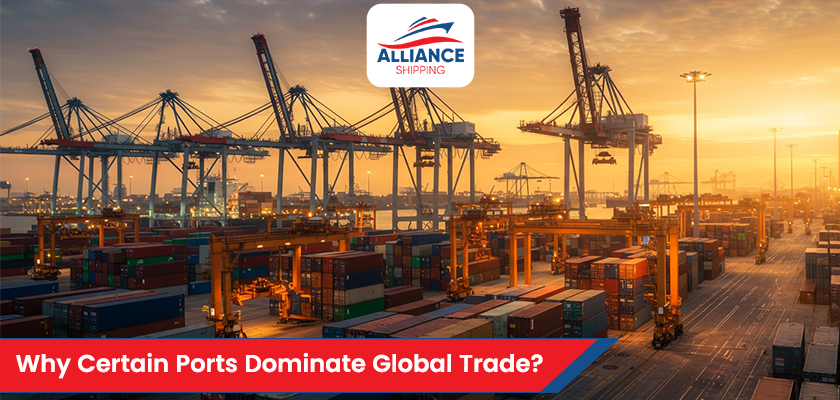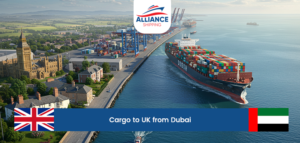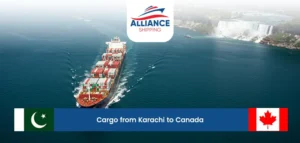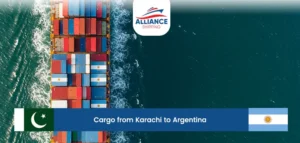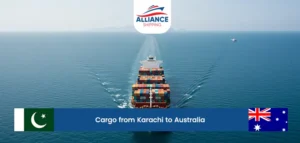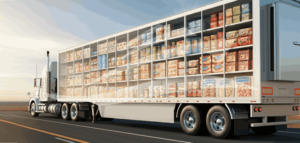When people ask why ports dominate global trade, the short answer is networks. Ships choose routes where other ships already go. Carriers want full vessels, tight schedules, and low costs per box. Shippers want frequency, speed, and fewer handoffs. A port that can offer all three wins more calls, and the cycle feeds itself. As we map routes, the fingers tap the keyboard and the mouse glides over hub names. That small rhythm mirrors the flow: links connect, volumes rise, and reliability improves.
Think of air travel. Major airports gain more flights because they already have many flights. Seaports work the same way. Once a port becomes a dependable hub, more lines add it to their rotations. With more weekly calls, exporters find space faster, and importers cut wait time. This is how ports dominate global trade by stacking small advantages that compound. A reliable pilot service, short truck queues, and quick customs all add minutes back into the day. Those minutes become hours across a voyage, and hours become a new standard others must match.
Network strength also draws investors. Terminal operators bring better cranes, smarter yard systems, and longer berths when they see stable demand. That investment attracts even more demand. Over time, the top hubs set the pace on cost and punctuality, which keeps the flywheel turning.
Hub-and-spoke math that explains why ports dominate global trade
The hub-and-spoke model is simple: big ships link big hubs; smaller feeders connect nearby ports. It reduces the number of direct routes needed to serve many origins and destinations. Instead of running dozens of thin services, carriers run a few thick ones, then branch out. The thick trunk absorbs demand spikes and lowers the cost per container. This math is a core reason ports dominate global trade once they become the natural hub in a region.
For exporters in smaller towns, the spoke is a feeder or a rail link. For importers, it is a quick domestic leg from the hub to the warehouse door. Because the hub concentrates volume, carriers can offer more sailings each week. With more frequency, planners can ship “little and often,” which reduces inventory and risk. When delays hit one spoke, the hub keeps the rest of the network moving. That resilience draws more bookings, which keeps the loop strong.
Tipping points and path dependence in how ports dominate global trade
Hubs do not win by chance. They cross a tipping point. After that, past choices lock in future wins. If a port solved early pain points, draft limits, crane reach, and yard congestion, it created trust. With trust came service commitments. With commitments came bigger ships. Bigger ships required deeper water and faster cranes, which justified more upgrades. This path dependence explains why ports dominate global trade for long periods once they secure the lead.
Yet tipping points can work in reverse. If a hub lets wait times grow or roads clog, planners move a loop to a rival. A shift of even one weekly service can pull away enough volume to break the flywheel. One changed call window, and the rotation no longer fits the tide. Leaders stay leaders by guarding these margins: predictable pilots, available tugs, and a berth always ready at the slot.
How ports dominate global trade: capacity, depth, and connectivity
Capacity sounds dull, but it is a real-world edge. Berths must be long enough for modern ships. Water must be deep at all tides. Yard space must be cleared fast between calls. A port with these basics is already halfway to dominance. Add rail spurs, express truck gates, and off-dock depots, and the whole move speeds up. This is the practical core of how ports dominate global trade day after day.
Depth matters because ships keep getting wider and heavier. Without enough draft, carriers must cut the load or skip the port. Cranes matter because reach and lift speed decide how long a ship sits at the quay. Every minute on the quay is fuel and crew time. Yard systems matter because boxes must stack, find, and load in the right order. When these parts line up, a call finishes on time, and the loop stays on schedule. That punctuality spreads trust across buyers, sellers, and trucking fleets.
Connectivity is the last mile. Even the best quay fails if trucks crawl through city traffic or if rail slots are scarce. Winning hubs plan the landside as carefully as the seaside. The layout tells a story: short turns, clean merges, and clear space to grow. These small, physical truths are why ports dominate global trade over rivals with similar cranes but weaker links.
Berths, cranes, and storage explain how ports dominate global trade
Start with the berth. A modern ship may need 400 meters or more. If the port cannot berth two large ships at once, schedules stack and delays ripple. Next, cranes. High outreach and fast cycle times cut hours off each call. Fewer hours mean fewer missed tides and less night work. Storage follows. A dense yard with smart stacking rules keeps boxes close to the quay without blocking lanes. The trio berth, crane, and yard must move in step.
Storage is not only space; it is logic. Boxes need the right slot so the truck or rail pick is quick. Ports that run data-driven yard plans shave minutes off each move. At scale, minutes become a competitive wall. This is a clear way ports dominate global trade: they waste less motion. The numbers tell you if the dance is smooth or if the cranes wait on trucks and vice versa. Add cold storage, oversize pads, and RoRo ramps, and more cargo types can flow through the same gate. Diversity of cargo keeps volumes stable through seasons.
Intermodal links that seal how ports dominate global trade
A great port reaches far inland. Fast rail corridors, dry ports, and barge routes extend the hub’s grip. With inland depots, customs can clear boxes closer to factories and stores. That saves time at the quay and shortens last-mile trips. These links seal the advantage and show another reason ports dominate global trade: they control not just the touchpoint by the sea but the wider corridor.
Truck gates matter too. Appointment systems smooth peaks. Dedicated lanes for export empties and reefers prevent jams. Smart weigh-in-motion scales cut stops. When these details work, drivers tell each other, and booking managers trust the slot.
Intermodal depth also buffers shock. If a storm halts trucks, rail can carry the load for a day. If a bridge closes, a barge can keep cargo moving. That flexibility is the quiet reason many ports dominate global trade year after year.
What can change the leaderboard, and who benefits
Dominance is not a promise. Policy changes, new canals, and fresh infrastructure can redraw maps. If a government streamlines customs or opens a free trade zone, flows can shift. If a rival dredges deeper or adds a double-track rail line, carriers may revisit rotations. This is where planning teams watch three things: total transit time, reliability, and all-in cost. Ports that improve two of the three often gain share within a season.
Technology is a lever. Better terminal operating systems, real-time slot booking, and automated cranes raise throughput with the same footprint. Data transparency, accurate ETAs, live gate times, and appointment APIs let shippers plan labor and trucks with less buffer. Those buffers are hidden costs. Remove them, and the route wins. It’s another quiet way ports dominate global trade without adding a single new berth.
Risk can also flip the table. Floods, heat, wind, and channel silt can force slowdowns. Ports that invest in resilience ,elevated yards, backup power, and redundant nav aids hold on to loops when the weather turns.
Policy, fees, and service quality shape which ports dominate global trade
Fees matter, but fairness matters more. Predictable tariffs help carriers price routes. Sudden hikes push business away. Customs speed is critical. If inspections are targeted and digital, dwell times drop without cutting safety. Ports that publish service standards and meet them earn trust. Trust is why ports dominate global trade even when another harbor is a few nautical miles closer.
Service quality is human. Pilots who know the channel, tug crews who arrive on time, and yard teams who fix issues on the first call all keep ships moving. A single mis-stowed bay can cost hours. Good ports learn fast from mistakes and update workflows.
Incentives help too.
Rebates for on-time arrivals, green fuel, or night gates spread traffic and cut emissions. Clear rules and practical perks make the ecosystem healthy.
Climate risk and resilience will test how ports dominate global trade
Rising seas, stronger storms, and heat waves raise the bar. Draft can change with silt shifts. Yard surfaces can rut in floods. Power grids can fail under heat. Ports that plan for these shocks will keep schedules when others cannot. This resilience is set in concrete, steel, and software: higher quay walls, stronger drains, cooler reefer racks, and backup microgrids.
Routing will adapt. Carriers may favor hubs with reliable pilots after storms, deeper maintained channels, and quick restart times. Inland links that ride above floodplains will matter more. Over time, these design choices decide which ports dominate global trade in a warmer world. Investing early is cheaper than losing a weekly call. Once a loop moves, getting it back can take seasons.
What to Watch Next – Closure
In the end, ports dominate global trade for practical reasons. They offer deep water, long berths, fast cranes, and clear data. They plug into rail, road, and river, so boxes leave quickly. They keep fees predictable and service steady. These small, repeatable wins make shippers confident and keep carriers loyal. When a hub hits that rhythm, the network effect defends it.
But the board can change. New dredging, smarter yards, safer channels, and cleaner trucks can shift share. Watch three signals: ship turnaround time, gate dwell, and schedule reliability. If a port improves these at once, volume will follow. The simple, tidy feeling of the last click is what the best hubs deliver to their partners every day, and it is the core reason ports dominate global trade.


